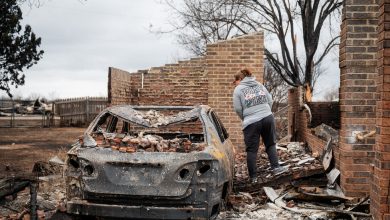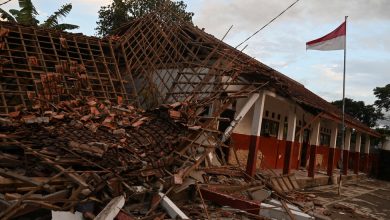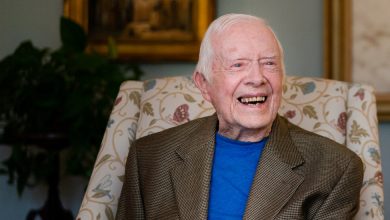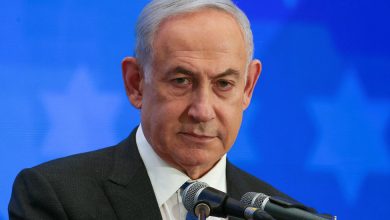Sri Lanka Economy Has ‘Hit Rock Bottom,’ Putting Pressure on President

COLOMBO, Sri Lanka — Just lentils, rice and tea without milk. Meals are increasingly meager for Sandamali Purnima, a Sri Lankan salon employee, her taxi-driver husband and their four young children. With cooking gas hard to find and the electricity cut, she cooks this basic fare outdoors over wood-fed flames.
A staircase in their suburban home leads to an unfinished second floor, concrete prices too high to continue.
“Building a house is hard,” Ms. Purnima said. “But eating is even harder.”
An economic crisis is disrupting life across Sri Lanka, an island nation off India’s southern coast that only recently had been outperforming its neighbors.
In less than a decade, Sri Lanka recovered from the ravages of a civil war that ended in 2009, soaring to the status of an upper-middle-income nation. It built a tourism-based economy that brought billions of dollars, many jobs and middle class comforts: high-end eateries and cafes, imported Jeeps and Audis, and upscale malls.
Now, Sri Lankans just want the lights to stay on.
The country’s enormous debt load, the pandemic and, most recently, the war in Europe have brought it to its knees.

Lining up to buy diesel fuel in Colombo this month. Two men died earlier this week in Sri Lanka while waiting in similarly long lines on scorching hot days.Credit…Atul Loke for The New York Times
The central bank is printing rupees and hoarding dollars, sending inflation to a record high of 17.5 percent in February. The finance minister is begging neighbors for credit lines to buy diesel fuel and milk powder. In a barter arrangement, the central bank is paying for Iranian oil with tea leaves.
For months, the government of President Gotabaya Rajapaksa has rationed power. Sections of the capital, Colombo, go dark suddenly, city streets becoming as inky black as the Indian Ocean beside them.
“We’ve really hit rock bottom,” said Paikiasothy Saravanamuttu, the founder and executive director of the Colombo-based Center for Policy Alternatives.
Then he paused, and conceded that many believe the situation could get even worse. “The question on everyone’s mind is: When is this going to absolutely crash?”
When Mr. Rajapaksa won elections in 2019, just months after Easter Sunday terrorist attacks that killed more than 250 people on the island, he had campaigned on a platform of restoring security to the nation, relying in part on his reputation as a brutal defense secretary who had helped bring Sri Lanka’s long civil war to a close.
His campaign also didn’t need to worry about name recognition, with the Rajapaksa family being well known to all Sri Lankans. His brother, Mahinda Rajapaksa, was Sri Lanka’s wartime president — and is now the prime minister. As the top commanders of an army accused of widespread atrocities during the civil war, including indiscriminate bombings of civilians in the breakaway Jaffna Peninsula in the country’s north, both men have been accused of war crimes by the families of victims and human rights groups.
Since becoming president, Gotabaya Rajapaksa has only strengthened his strongman reputation, jailing opponents and dissidents.
But, as the economy has worsened under his watch, the pressure on him to ease the suffering is mounting.
School exams have been postponed because of a scarcity of paper. India’s Coast Guard rescued a boat full of asylum seekers from northern Sri Lanka who said they were making the narrow ocean crossing after having gone weeks without enough food back home.
Two men died this week waiting in long lines for fuel on scorching hot days.
The supply shortages set off the largest demonstration in Sri Lanka in years earlier this month, with a series of candlelight vigils protesting the rampant blackouts.
The president, a former military officer, responded by deploying troops to gas stations on Tuesday to quell public unrest.
The Russian invasion of Ukraine and the coronavirus flare-up in China have disrupted supply chains and boosted the cost of goods globally. In Sri Lanka, however, the external turmoil has only exacerbated a problem that was years in the making.
During the presidency of Mahinda Rajapaksa from 2005 to 2015, Sri Lanka took on huge amounts of expensive debt, meant to help turn the country into another Singapore by building ambitious infrastructure projects, including ports. But, so far, many of those projects have stalled, failing to attract the private investment that the government had hoped for.
This saddled the next administration, led by a non-Rajapaksa president, Maithripala Sirisena, with high-interest loans. But his administration managed to convert the pricey short-term loans into cheaper, longer-term debt, and built up foreign reserves to some $7.5 billion. Sri Lanka had a budget surplus for the first time in 52 years.
Then Gotabaya Rajapaksa came to power, enacting a sweeping tax cut just before the pandemic. Now Sri Lanka is posting negative foreign assets for the first time in its history, and yields on its sovereign debt have soared from 7 percent to 16 percent.
Sri Lankans can’t access dollars, which means it is difficult for them to travel or hedge against the fast devaluation of the local currency, the rupee. Commodities like food and fuel are either unavailable or exorbitantly priced.
The country is essentially living hand-to-mouth, and increasingly dependent on foreign assistance, battering Sri Lanka’s sense of its self as a rising economic star.
India recently gave Sri Lanka a $1.5 billion credit line to tide over a fuel crisis, and China is considering a $2.5 billion credit line,the country’s ambassador to Sri Lanka told reporters this week. The government has even turned to poorer neighbors like Bangladesh for credit lines.
“We don’t have anything else to purchase fuel,” said Shehan Semasinghe, a lawmaker and household economy minister. “Our main objective is to get fuel, essential goods and medicine.”
And it’s not just fuel and medicine that are in desperately short supply, but also that most essential necessity: food.
Because of a poorly executed plan to reduce imports by going organic, Sri Lankan farmers were short of fertilizer this growing season, resulting in a lack of the country’s staple food, rice. China donated a million tons, and Sri Lanka agreed to pay an inflated price for more from Myanmar.
The government has closed embassies abroad, put prime real estate on the market, scheduled power cuts and converted the dollars that its citizens had stored in banks into Sri Lankan rupees.
But these stopgap measures by President Rajapaksa and his finance minister — another brother, Basil Rajapaksa — are unlikely to be anywhere near enough to cover the growing pile of debt owed to China and other big lenders, according to economic experts.
“Sri Lanka’s economy is experiencing multiple organ failure, and sepsis has set in,” said Murtaza Jafferjee, the chairman of the Advocata Institute, a think tank in Colombo.
Ratings agencies have downgraded Sri Lanka’s debt by several notches, and investors are betting on a default.
The government has responded to the ratings agency downgrades and dour analyses with a mix of indignation, disbelief and denial, initially resisting calls to seek help from the International Monetary Fund.
Basil Rajapaksa, however, relented earlier this month, saying that the country would work with the I.M.F.
Officials are betting that a huge upturn in tourism, earnings from which were down 62 percent in December from the year before, can right the country’s balance sheet.
“We know that this difficulty that we’re facing is mainly because of the tourism receipts not being there. If the tourism receipts had been there, notwithstanding the Covid debacle, nobody would have been talking about I.M.F.,” said Sri Lanka’s central bank governor, Ajith Nivard Cabraal.
Many less optimistic ministers have been sacked by the Rajapaksa administration.
With its creditworthiness shot, the government is buying oil and gas at spot prices, that is, the going rate as container ships pull into port. Recently, as a tanker docked outside Colombo, the price of its diesel cargo increased from $35 million to $50 million.
As the economic pain intensifies, the political opposition to the Rajapaksas senses an opportunity.
Earlier this month, Sajith Premadasa, the opposition lawmaker who lost the 2019 election to Mr. Rajapaksa, organized a demonstration that roiled Colombo. Tens of thousands of protesters marched to the president’s office demanding that he resign, wearing head scarves in Sinhala, Tamil and English that read, “Gota, go,” referring to the president’s nickname.
At another recent protest, Ms. Purnima, 42, joined dozens of other women who marched to the presidential mansion in Colombo protesting against the frequent power cuts, disappearance of cooking gas and milk powder, and rising costs of fresh food.
“Life is very difficult now,” she said.
Aanya Wipulasena contributed reporting.





